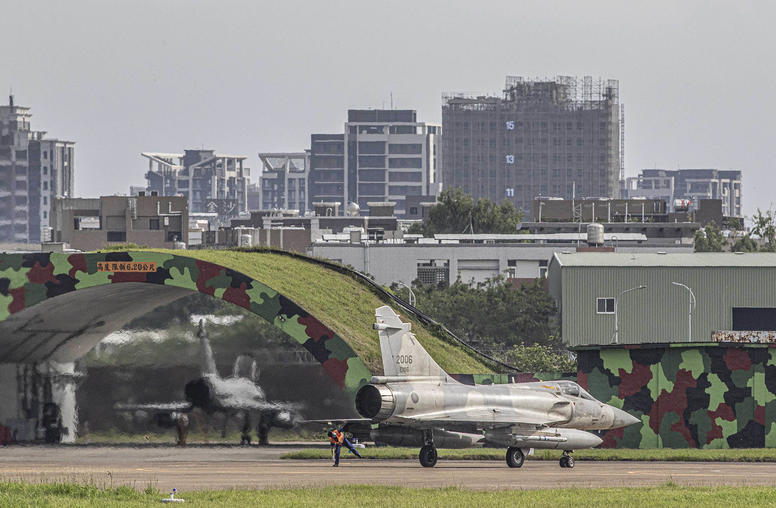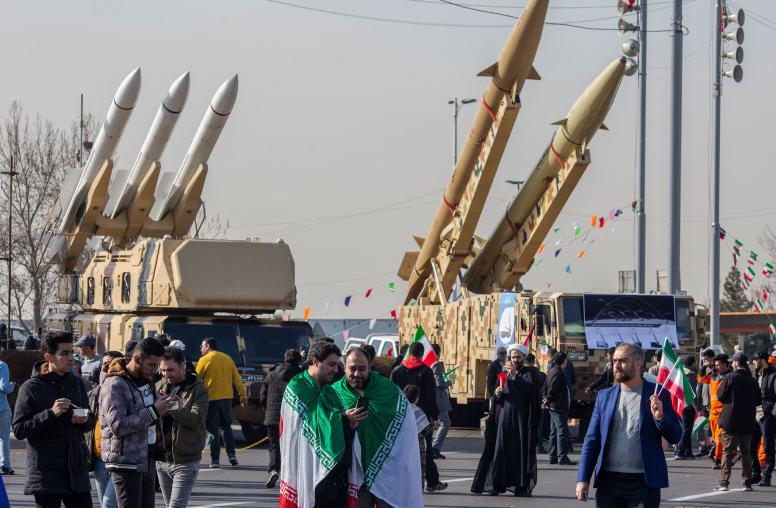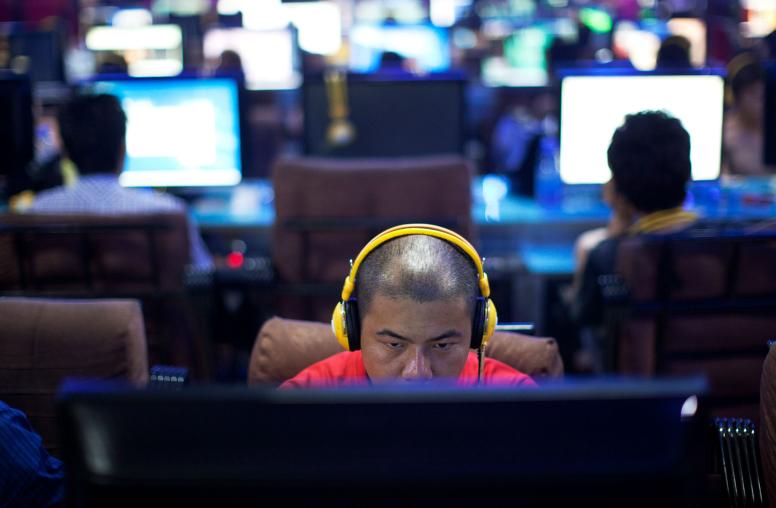Spurred by China Rivalry, U.S., India Deepen Strategic Ties
A series of bilateral agreements demonstrate that Washington is firmly tilted toward India when it comes to regional disputes.
The United States and India inked on October 27 a key agreement that will help New Delhi get real-time access to American geospatial intelligence. The agreement, known as the Basic Exchange and Cooperation Agreement (BECA), was a result of the 2+2 ministerial dialogue between U.S. and Indian defense and foreign affairs chiefs, following a trend in recent years of deepening military cooperation geared toward pushing back on China’s increasingly assertive policies in the region. This comes after a spate of skirmishes this year on the Line of Actual Control (LAC), a Sino-Indian disputed border region. USIP’s Vikram Singh looks at India’s evolving defense posture, deepening U.S.-Indian ties, and how it relates to India’s rocky relationships with China and Pakistan.

It was recently revealed that United States is leasing armed Predator drones to India for the first time. Does this reflect the deeper defense partnership and the signing of the fourth major defense cooperation agreement during the recent meeting of ministers of defense and foreign affairs?
India, like all of its neighbors, has been following the global trend of deploying drones for surveillance and increasingly for strike missions. India has developed drones indigenously and purchased drones from Israel and other nations. The United States has been reluctant to supply drones, especially armed drones, because U.S. officials have regulated drones under the Missile Technology Control Regime. The United States has been changing that policy to treat drones more as aircraft than missiles, and the U.S. government recently made clear that it would approve the sale of drones to India, to include armed drones.
This is not directly tied to the so-called foundational agreements, but those agreements set the right environment for this kind of decision. The fact that the Predator drones are being leased rather than purchased outright reflects India’s budget constraints more than anything else.
At the 2+2 meeting right before the U.S. election, New Delhi and Washington did conclude the final of four defense agreements. One called BECA allows easy sharing of geospatial intelligence—satellite images and analysis—and comes at a critical time as India faces increased threats from China on top of its longstanding tensions with Pakistan. The other agreements made it possible to share logistics and support like fuel for ships and aircraft (LEMOA); allow sharing of classified communications systems (COMCASA); and allow sharing of classified information by U.S. and Indian industry (ISA).
How does the conclusion of these bilateral defense agreements affect the tensions ongoing between India and China and India and Pakistan?
From a strategic and operational standpoint, these agreements put India closer to the United States than any other non-treaty ally. For example, before the 2+2 dialogue and conclusion of the BECA, the U.S. had to go through a careful process to share information from satellites over western China and Tibet. Now the U.S. can decide to share such information in real time. The benefits to Indian forces are immediate. The U.S. will also learn a lot from India’s insights and intelligence, especially about terrorism, Pakistan, and China.
The benefits of COMCASA and LEMOA are mostly seen in complex military exercises that let U.S. and Indian forces practice how to work together in a crisis. The most likely real-world scenario in which these agreements would be used is a humanitarian crisis. For example, India and the United States could use these tools to coordinate relief activities after an earthquake or tsunami. Of course, the arrangements would bring similar benefits if the nations ever fight together in a military conflict.
For China and Pakistan, which are conducting joint military exercises of their own right now, the strategic signal of these agreements is that Washington is firmly tilted toward India when it comes to regional disputes. Both Beijing and Islamabad claim this is destabilizing, but American and Indian officials believe it serves a deterrent effect on both countries, especially in light of China’s increasing pressure along the disputed Line of Actual Control (LAC) with India.
The Chinese apparently have built villages well inside Bhutan in an area they clashed with Indian forces back in 2017. How significant is this and how does it relate to other border clashes that have been going on in the LAC this year?
I think this confirms that the right analogy in the Himalayas is the South China Sea, where Beijing changed the facts in the water through unilateral building of infrastructure and militarization. After committing that it would not militarize the South China Sea in 2015, China’s People’s Liberation Army proceeded to build substantial military infrastructure. Similarly, China’s disengagement in Doklam in 2017 never meant a return to the status quo ante. Indeed, China continually expanded its military presence and has now moved to settle people inside Bhutan, creating at least three villages from scratch inside Bhutan’s territory.
Once military garrisons are operating year-round and villages are established, any effort to push China back becomes very difficult. This foreshadows how China will handle other areas along the LAC in Ladakh.
What does the winter hold for India and China in this standoff, and how does India-China tension affect stability between India and Pakistan?
Both sides have settled in to this cruelest of landscapes for a long and possibly indefinite standoff. Satellite imagery shows that China has built its capacity along the LAC but also in the rear, with deployment of significant forces, new air defenses and even greenhouses to grow food and other infrastructure that facilitates permanent military installations.
India is unlikely to achieve any rollback of China’s advances but has done relatively well reenforcing its own claims and bolstering its own capabilities—to include things like the new Predator drones leased from the U.S. and the deployment of additional ground and air forces, artillery, and air defenses.
In the South China Sea, the Chinese benefit from the fact that its neighbors are unlikely to go to war over remote rocks and shoals. Similarly, no leader wants a prolonged conflict in the remote and barren high Himalaya. China wants to stretch India into accepting Chinese positions and then return to a dialogue over the border that lasts for years and remains inconclusive. This is similar to the endless “Code of Conduct” discussions that China supports over the South China Sea.
China’s other aim may be to deter India from the kinds of cross-border strikes it has undertaken in response to terrorist attacks conducted by groups based in Pakistan. Indian and Chinese tension is certain to bolster China-Pakistan ties, which have steadily deepened, especially with the U.S pulling away from Pakistan in recent years over its failure to reign in terrorist groups.
Despite the increased Sino-Indian tensions, the greatest danger in the region remains a flare up between India and Pakistan that escalates into a war between the nuclear powers. Such a crisis would most likely be sparked by another terrorist attack in India traced back to extremists operating freely inside Pakistan. China largely turns a blind eye to Pakistan’s ties to militants, but in past crises, Beijing would generally urge restraint and press Pakistan a bit more to reign in extremist groups. However, China’s assertive posture and tense standoff with India in 2020 make it harder to predict how Beijing will act in a crisis.



